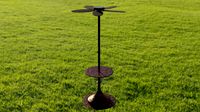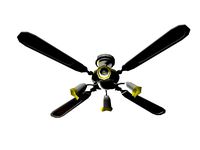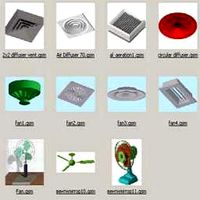GrabCAD

Omedica Ventilator
by GrabCAD
Last crawled date: 1 year, 11 months ago
The Omedica Ventilator provides positive pressure ventilation using a controlled continous spinning fan blower to deliver air and optinoally supplemental oxygen to the patient.
Maily it consisits of two systems pnenumatic ( with off the shelf pressure and flow rate and temperature sensors) and simple PCB- Control system based on a Raspberry Pi computer with a touch LCD- Screen.
An ATX- Computer power supply is used wit input voltage and frequency ranges of 90 to 250 V AC and 50 to 60 Hz, respectively.
If AC power is unavailable, the ventilator may be connected through an DC input connector to an external DC power source (5 to 12 V DC), such as an automobile power port, or optionally (in future versions) power directly from the internal battery (14 V, nominal).
The touch LCD is used to enter breath delivery parameters.
Breath delivery parameters is based on a closed loop control system that adjusts the speed of the fan blower. The speed is controlled to the patient pressure signal or the inspired flow signal depending on whether pressure ventilation or volume ventilation is selected.
The fan blower speed vary according to the ventilation mode, ventilator settings and whether the ventilator is in an inspiratory or expiratory phase.
The speed of the blower adjusts under software control during using a Raspberry Pi/ Arduino als controller.
Using the measurements from pressure and flow sensors in Sensors board the inspiration phase can be defined and controlled according to the setting mode selected above.
In this design , after discussing the Hardware design concept of the ventilators, the theory of operation and the functionality is mainly based on literature and a free source of a commercial ventilator of Meditronic ( Puritan Benntt 560) also some parts are GrabCAD downloaded ( I apollogies and thanks -->sources later will be listed sources in BOM) was used to shorten the development time and minimize the risk which will affect the patient in such critical panademic suitatio. Many Thanks to Meditronic for making this valuable source available and free.
The meditronic above model was be analyzed to determine if the our designs are as well as required in practical details and compatibility to medical principles and regulations.
Status ( 1.May 2020) of Projekt and progress of the design and proof of the model are on going to :
1) the design source files (e.g. computer aided design CAD ), which are needed to iterate on the design mechanically; and are going to be finalized ----> 90 %
2) as well as production files (e.g. STL files which are used by 3-D printers to make mechanical components); ---> 80 %
3) printed circuit board (PCB) layouts and other electronics design files to allow production as well as design evolution of the electronics; -----> 60 %
4) bill of materials (BOM), which is needed to allow to evaluate the components employed as well as more find alternatives; ------> 70%
5) list of tools required, which are needed to determine if a device can be fabricated in a open source community ; -------> 80%
6) wiring diagrams, which are used to assemble the device with electronics; ------> 70%
7) firmware and software ( porting part of codes and new GUI), which are needed to run the actual device; ----> 60%
8) instructions for the assembly, so makers can fabricate the device when the parts are made or acquired; ------------> 30 %
10) instructions for operation, so the end users can use and maintain the device.----> 30%
Next, the existing resources are used to accelerate the proof of design with the next 3 weeks .
Lastly, as this is a rapidly evolving situation, future work will be described to enable wide-spread mass distributed manufacturing of open source ventilators to fight against the current COVID19 pandemic as well as for future pandemics and to provide the devices to low-resource regions of the world that are underserved even in normal times.
Maily it consisits of two systems pnenumatic ( with off the shelf pressure and flow rate and temperature sensors) and simple PCB- Control system based on a Raspberry Pi computer with a touch LCD- Screen.
An ATX- Computer power supply is used wit input voltage and frequency ranges of 90 to 250 V AC and 50 to 60 Hz, respectively.
If AC power is unavailable, the ventilator may be connected through an DC input connector to an external DC power source (5 to 12 V DC), such as an automobile power port, or optionally (in future versions) power directly from the internal battery (14 V, nominal).
The touch LCD is used to enter breath delivery parameters.
Breath delivery parameters is based on a closed loop control system that adjusts the speed of the fan blower. The speed is controlled to the patient pressure signal or the inspired flow signal depending on whether pressure ventilation or volume ventilation is selected.
The fan blower speed vary according to the ventilation mode, ventilator settings and whether the ventilator is in an inspiratory or expiratory phase.
The speed of the blower adjusts under software control during using a Raspberry Pi/ Arduino als controller.
Using the measurements from pressure and flow sensors in Sensors board the inspiration phase can be defined and controlled according to the setting mode selected above.
In this design , after discussing the Hardware design concept of the ventilators, the theory of operation and the functionality is mainly based on literature and a free source of a commercial ventilator of Meditronic ( Puritan Benntt 560) also some parts are GrabCAD downloaded ( I apollogies and thanks -->sources later will be listed sources in BOM) was used to shorten the development time and minimize the risk which will affect the patient in such critical panademic suitatio. Many Thanks to Meditronic for making this valuable source available and free.
The meditronic above model was be analyzed to determine if the our designs are as well as required in practical details and compatibility to medical principles and regulations.
Status ( 1.May 2020) of Projekt and progress of the design and proof of the model are on going to :
1) the design source files (e.g. computer aided design CAD ), which are needed to iterate on the design mechanically; and are going to be finalized ----> 90 %
2) as well as production files (e.g. STL files which are used by 3-D printers to make mechanical components); ---> 80 %
3) printed circuit board (PCB) layouts and other electronics design files to allow production as well as design evolution of the electronics; -----> 60 %
4) bill of materials (BOM), which is needed to allow to evaluate the components employed as well as more find alternatives; ------> 70%
5) list of tools required, which are needed to determine if a device can be fabricated in a open source community ; -------> 80%
6) wiring diagrams, which are used to assemble the device with electronics; ------> 70%
7) firmware and software ( porting part of codes and new GUI), which are needed to run the actual device; ----> 60%
8) instructions for the assembly, so makers can fabricate the device when the parts are made or acquired; ------------> 30 %
10) instructions for operation, so the end users can use and maintain the device.----> 30%
Next, the existing resources are used to accelerate the proof of design with the next 3 weeks .
Lastly, as this is a rapidly evolving situation, future work will be described to enable wide-spread mass distributed manufacturing of open source ventilators to fight against the current COVID19 pandemic as well as for future pandemics and to provide the devices to low-resource regions of the world that are underserved even in normal times.
Similar models
grabcad
free

BiPAP Ventilator with Mask Hookup
...proper respiration of patients. then the air is released into the surrounding environment. the patient has just taken one breath.
grabcad
free

Flow Power
...onnections to the element of the proposed ventilator are not illustrated at this stage so as not to obscure the main features.
grabcad
free

Flow Trigger Ventilator
... that must be sterilized can be milled or laser cut from peek plastic. parts that do not need to be sterilized can be 3d printed.
grabcad
free

ProjectWorx - COVID19 - Breath Right
...hich provide feedback for motor control and alarms. these sensors can be moved along the manometer to adjust operating setpoints.
grabcad
free

Tube Blower axial
...ed for moderate-pressure ventilation and industrial-process applications where axial flow is desirable and space is at a premium.
grabcad
free

Micro ventilator covid-19
...dly, simple and safe design for all patients,
balance the air flow and atmosphere pressure , protect the capillaries, alveoli ,
grabcad
free

Baxter Ventilator
...the prototype met the target criteria and produced results similar to industry-standard ventilators, across a range of settings and...
grabcad
free

AdVentilate
...powered by the included rechargeable battery in cases where an external power supply is unavailable, such as makeshift hospitals.
grabcad
free

Blower assembly
...flow rate is beginning from 5.7 and end to 57000 cubic meters.
usages - dryer, industrial fans, ventilation, room cleaners, etc.
grabcad
free

Blower
...ed for exhausting, aspirating, cooling, ventilating, conveying etc. blower is also commonly known as centrifugal fans in industry
Ventilator
3d_export
$5

ventilation
...ventilation
3dexport
5 types of ventilation
3d_export
$10

ventilation
...ventilation
3dexport
5 types of ventilation and engineer communication
3d_ocean
$5

Ventilator
...pliance blower desk detailed electric electro fan hvac oscillating realistic table ventilator
high poly, very detailed ventilator
3d_export
$25

ventilator
...ventilator
3dexport
turbosquid
$20

Ventilator
... free 3d model ventilator for download as blend, fbx, and obj on turbosquid: 3d models for games, architecture, videos. (1612370)
turbosquid
$43

Ventilator
... available on turbo squid, the world's leading provider of digital 3d models for visualization, films, television, and games.
turbosquid
$25

ventilation
... available on turbo squid, the world's leading provider of digital 3d models for visualization, films, television, and games.
turbosquid
$4

Ventilator
... available on turbo squid, the world's leading provider of digital 3d models for visualization, films, television, and games.
3d_export
$5

ventilation and columns
...ventilation and columns
3dexport
ventilation and columns.<br>3 types of ventilation<br>2 types of columns
archive3d
free

Ventilators 3D Model
...ventilators 3d model
archive3d
ventilation ventilation equipment hvac
